Table of Contents
- The Power of a Strong Online Presence for Management Consultants
- I. Planning Your Management Consultant Website: Laying a Solid Foundation
- 1. Define Your Target Audience
- 2. Determine Your Website’s Purpose and Goals
- 3. Develop a Comprehensive Content Strategy
- 4. Sitemap Planning for User Experience and SEO
- II. Choosing the Right Platform and Hosting: Technical Foundations
- 1. Content Management System (CMS) Selection
- 2. Secure and Reliable Web Hosting
- 3. Domain Name Selection
- III. Website Design and User Experience: Creating a Professional and Engaging Experience
- 1. Professional and Modern Design
- 2. Intuitive Navigation and User Flow
- 3. Optimize for Speed and Performance
- 4. Accessibility Considerations
- 5. Consulting Design Best Practices
- IV. Content Creation and Optimization: Sharing Your Expertise
- 1. Compelling Homepage Content
- 2. In-Depth Service Pages
- 3. Powerful Case Studies
- 4. Engaging Blog Content
- 5. Optimizing Content for SEO
- V. Lead Generation and Conversion Optimization: Turning Visitors into Clients
- 1. Lead Capture Forms
- 2. Call-to-Action Optimization
- 3. Email Marketing
- 4. Landing Page Optimization
- 5. Live Chat
- VI. Promoting Your Management Consultant Website: Driving Traffic and Visibility
- 1. Search Engine Optimization (SEO)
- 2. Social Media Marketing
- 3. Content Marketing
- 4. Paid Advertising
- 5. Public Relations
- VII. Analyzing and Improving: Continuous Optimization
- 1. Google Analytics
- 2. Heatmaps
- 3. A/B Testing
- 4. User Feedback
- 5. Regular Updates
- VIII. Qrolic Technologies: Your Partner in Digital Transformation
- IX. Common Mistakes to Avoid
- X. Final Thoughts: Your Website is an Investment
The Power of a Strong Online Presence for Management Consultants
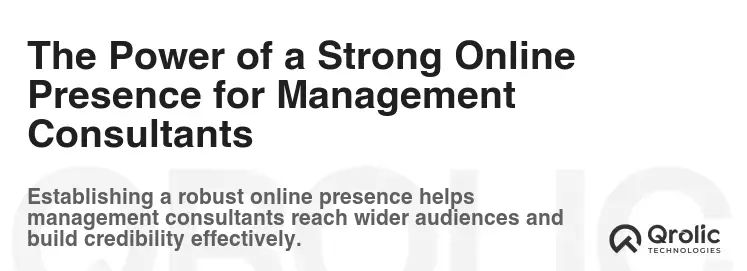
In today’s digital age, a robust online presence is non-negotiable for any business, and management consulting is no exception. Your website is often the first point of contact with potential clients, acting as a 24/7 marketing machine. It’s your digital storefront, your brand ambassador, and your credibility builder all rolled into one. It’s no longer optional; it’s essential for success.
Why is a website so critical for management consultants?
- Establishes Credibility and Trust: A professional website instantly lends credibility. It shows you’re serious about your business and committed to providing value. Think of it as your digital handshake.
- Generates Leads and Attracts Clients: Potential clients actively search online for consultants. A well-optimized website ensures they find you first.
- Showcases Expertise and Services: Your website is the perfect platform to highlight your areas of expertise, the types of services you offer, and the specific industries you serve.
- Builds Your Brand: A consistent brand experience across your website reinforces your company’s identity and values.
- Facilitates Communication: Provide easy ways for potential clients to contact you, schedule consultations, or request proposals.
- Demonstrates Results: Case studies, testimonials, and success stories on your website showcase the tangible results you’ve achieved for past clients, building confidence in your abilities.
Think of your website as an investment, not an expense. It’s an investment in your brand, your credibility, and ultimately, your business growth. This essential guide will walk you through the steps to create a compelling and effective management consultant website.
I. Planning Your Management Consultant Website: Laying a Solid Foundation
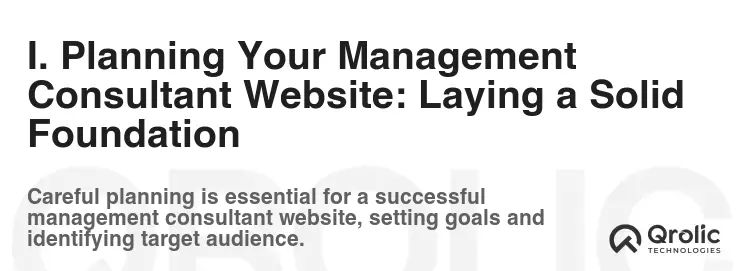
Before you dive into the technical aspects, careful planning is paramount. This stage involves defining your target audience, outlining your website’s purpose, and creating a content strategy.
1. Define Your Target Audience
Who are you trying to reach? Understanding your ideal client is crucial for tailoring your website’s message and design. Consider:
- Industry: Which industries do you specialize in (e.g., healthcare, finance, manufacturing)?
- Company Size: Do you target small businesses, medium-sized enterprises, or large corporations?
- Specific Challenges: What problems do you help your clients solve (e.g., cost reduction, process improvement, market entry)?
- Job Titles: Who are the decision-makers you need to influence (e.g., CEOs, CFOs, VPs)?
- Pain Points: What are their biggest challenges and frustrations?
- Demographics: Location, age (if relevant to your consulting niche).
By understanding your audience deeply, you can craft website content that resonates with their specific needs and interests.
2. Determine Your Website’s Purpose and Goals
What do you want your website to achieve? Define specific, measurable, achievable, relevant, and time-bound (SMART) goals.
- Lead Generation: Collect leads through contact forms, email sign-ups, or consultation requests.
- Brand Awareness: Increase recognition and establish thought leadership in your industry.
- Client Acquisition: Convert website visitors into paying clients.
- Service Promotion: Showcase your consulting services and expertise.
- Content Marketing: Attract and engage your target audience with valuable content.
- Recruiting: Attract talented consultants to join your firm.
These goals will guide your website’s design, content, and marketing strategy. Make them crystal clear.
3. Develop a Comprehensive Content Strategy
Content is king! Your website’s content should be informative, engaging, and optimized for search engines.
- Core Pages: Plan the essential pages of your website, such as:
- Homepage: The first impression – highlight your value proposition, key services, and client testimonials.
- About Us: Tell your company’s story, showcase your team’s expertise, and build trust.
- Services: Detail your consulting services, target industries, and methodologies.
- Case Studies: Demonstrate your success with real-world examples and quantifiable results.
- Blog: Share valuable insights, industry trends, and thought leadership articles.
- Contact Us: Provide easy ways for potential clients to get in touch.
- Content Calendar: Plan regular blog posts, articles, and updates to keep your website fresh and engaging.
- Keyword Research: Identify the keywords your target audience uses to search for management consultants online. Use tools like Google Keyword Planner, SEMrush, or Ahrefs.
- Content Optimization: Optimize your website content for search engines by incorporating relevant keywords, using clear headings, and writing compelling meta descriptions.
4. Sitemap Planning for User Experience and SEO
A well-structured sitemap is crucial for both user experience (UX) and search engine optimization (SEO). It helps visitors easily navigate your website and allows search engines to crawl and index your content effectively. Consider this example sitemap:
- Homepage
- About Us
- Our Mission
- Our Team
- Our Values
- Services
- Strategy Consulting
- Operations Improvement
- Financial Advisory
- Technology Consulting
- Human Capital Management
- Industries
- Healthcare
- Financial Services
- Manufacturing
- Retail
- Technology
- Case Studies
- [Case Study 1 Title]
- [Case Study 2 Title]
- [Case Study 3 Title]
- Blog
- [Blog Post 1 Title]
- [Blog Post 2 Title]
- [Blog Post 3 Title]
- Resources
- White Papers
- Ebooks
- Templates
- Contact Us
This structure provides a clear and logical flow for users and search engines alike. Each page title should be keyword-rich and descriptive.
II. Choosing the Right Platform and Hosting: Technical Foundations
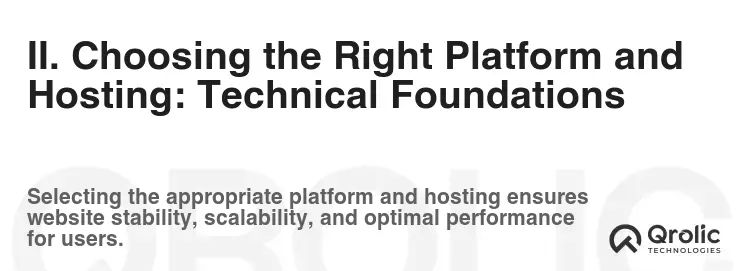
The platform and hosting you choose are the foundation of your website. Selecting the right options is critical for performance, security, and scalability.
1. Content Management System (CMS) Selection
A CMS simplifies website creation and management. Here are some popular options:
- WordPress: The most popular CMS, offering flexibility, a vast library of plugins and themes, and a large community for support. Excellent for content-driven websites and blogs. Highly recommended due to its SEO capabilities and ease of use.
- Squarespace: A user-friendly platform with drag-and-drop functionality and beautiful templates. Suitable for smaller businesses with limited technical expertise. However, it offers less customization than WordPress.
- Wix: Similar to Squarespace, Wix offers a simple interface and a variety of templates. Good for creating visually appealing websites quickly, but lacks the scalability and advanced features of WordPress.
- Joomla: A more complex CMS than WordPress, offering more control over website structure and functionality. Suitable for larger websites with advanced requirements.
Recommendation: For most management consulting firms, WordPress is the best choice due to its flexibility, SEO capabilities, and extensive plugin ecosystem.
2. Secure and Reliable Web Hosting
Your web hosting provider stores your website’s files and ensures it’s accessible online. Choose a provider with:
- Reliability: Uptime guarantee of at least 99.9%.
- Security: SSL certificates, firewalls, and regular backups.
- Speed: Fast servers and content delivery network (CDN) integration.
- Scalability: Ability to handle increasing traffic and storage needs.
- Customer Support: Responsive and helpful support team.
Popular web hosting providers include:
- Bluehost: A popular and affordable option, especially for WordPress websites.
- SiteGround: Known for its excellent performance and customer support.
- HostGator: Offers a range of hosting plans and features.
- WP Engine: A managed WordPress hosting provider, optimized for speed and security.
Tip: Consider managed WordPress hosting for enhanced performance and security if you choose WordPress as your CMS.
3. Domain Name Selection
Your domain name is your website’s address. Choose a domain name that is:
- Relevant: Reflects your company name or consulting services.
- Memorable: Easy to remember and pronounce.
- Short: Concise and easy to type.
- Available: Check for availability across different extensions (.com, .net, .org).
Best Practice: Aim for a .com domain extension if possible, as it’s the most widely recognized.
III. Website Design and User Experience: Creating a Professional and Engaging Experience
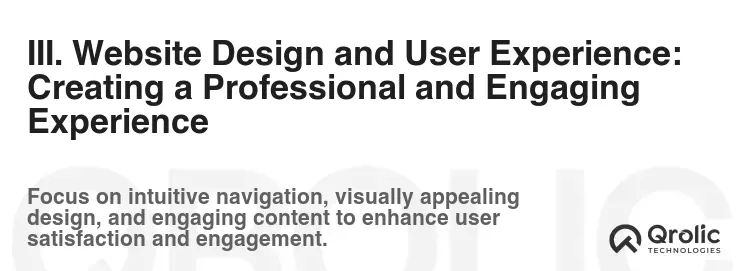
Your website’s design and user experience (UX) are crucial for attracting and retaining visitors. A well-designed website is visually appealing, easy to navigate, and optimized for conversions.
1. Professional and Modern Design
Your website’s design should reflect your brand and industry. Consider these elements:
- Clean and Minimalist: Avoid clutter and distractions. Focus on clear messaging and a streamlined design.
- High-Quality Images: Use professional photographs of your team, office, and clients. Avoid stock photos that look generic.
- Consistent Branding: Maintain consistent colors, fonts, and logo usage throughout your website.
- Mobile-Friendly: Ensure your website is responsive and looks great on all devices (desktops, tablets, and smartphones). Mobile-first indexing is now the standard for Google.
Design Tip: Invest in a professional website theme or template that is specifically designed for consulting businesses.
2. Intuitive Navigation and User Flow
Make it easy for visitors to find the information they need.
- Clear Menu Structure: Use a simple and logical menu structure to guide visitors through your website.
- Search Functionality: Implement a search bar to allow visitors to quickly find specific content.
- Call-to-Action Buttons: Use prominent call-to-action (CTA) buttons to encourage visitors to take desired actions (e.g., “Contact Us,” “Request a Consultation,” “Download Our Guide”).
- Internal Linking: Link relevant pages together to improve navigation and SEO.
- Breadcrumbs: Use breadcrumbs to show visitors their location within the website.
3. Optimize for Speed and Performance
Website speed is a crucial ranking factor for search engines and affects user experience.
- Optimize Images: Compress images to reduce file size without sacrificing quality.
- Caching: Implement caching to store frequently accessed data and reduce server load.
- Content Delivery Network (CDN): Use a CDN to distribute your website’s content across multiple servers, improving loading times for visitors from different locations.
- Minimize HTTP Requests: Reduce the number of files your website needs to load (e.g., combine CSS and JavaScript files).
Tool Recommendation: Use Google PageSpeed Insights to analyze your website’s speed and identify areas for improvement.
4. Accessibility Considerations
Ensure your website is accessible to users with disabilities.
- Alternative Text for Images: Provide descriptive alternative text for all images.
- Keyboard Navigation: Ensure all website elements can be accessed using a keyboard.
- Color Contrast: Use sufficient color contrast between text and background.
- Captions and Transcripts: Provide captions for videos and transcripts for audio content.
Adhering to accessibility guidelines (WCAG) not only benefits users with disabilities but also improves the overall user experience for everyone.
5. Consulting Design Best Practices
Effective consulting design goes beyond aesthetics; it’s about building trust and conveying expertise.
- Showcase Expertise Through Design: Use visuals to reinforce your messaging. For example, infographics illustrating complex processes or data visualizations showing positive outcomes.
- Strategic Use of White Space: Ample white space makes the website feel less cluttered and directs attention to key elements.
- Professional Photography: Avoid generic stock photos. Invest in high-quality photos of your team, your office, and client interactions (with permission, of course).
- Subtle Animations: Use subtle animations to guide the user’s eye and make the website more engaging without being distracting.
IV. Content Creation and Optimization: Sharing Your Expertise

High-quality, informative content is the cornerstone of a successful management consultant website. It attracts visitors, establishes your expertise, and drives conversions.
1. Compelling Homepage Content
Your homepage is the first impression. It should clearly communicate your value proposition and encourage visitors to explore further.
- Headline: A clear and concise headline that highlights your key benefit.
- Subheadline: An elaboration on your headline, explaining what you do and who you serve.
- Value Proposition: A clear statement of the unique value you offer to clients.
- Call-to-Action: A prominent CTA that encourages visitors to take the next step.
- Client Testimonials: Positive testimonials from satisfied clients.
- Key Services: A brief overview of your main consulting services.
2. In-Depth Service Pages
Each service page should provide detailed information about the specific service, the benefits it offers, and the industries it targets.
- Service Overview: A clear explanation of the service.
- Benefits: A list of the key benefits clients can expect.
- Target Industries: The industries the service is most relevant to.
- Methodology: A brief description of your approach and methodology.
- Case Studies: Relevant case studies that demonstrate the service’s effectiveness.
- Call-to-Action: A CTA to request a consultation or learn more.
3. Powerful Case Studies
Case studies are essential for demonstrating your expertise and building trust. Each case study should include:
- Client: The name of the client (with permission).
- Challenge: The specific challenge the client faced.
- Solution: The solution you implemented.
- Results: The quantifiable results you achieved (e.g., cost savings, revenue growth, efficiency improvements).
- Testimonial: A quote from the client expressing their satisfaction.
Tip: Use visuals, such as charts and graphs, to illustrate the results you achieved.
4. Engaging Blog Content
A blog is a powerful tool for attracting visitors, establishing thought leadership, and driving traffic to your website.
- Relevant Topics: Choose topics that are relevant to your target audience and align with your consulting services.
- Informative and Engaging: Write articles that are informative, engaging, and provide valuable insights.
- Keyword Optimization: Optimize your blog posts for relevant keywords.
- Regular Posting: Publish new blog posts regularly to keep your website fresh and engaging.
- Promote Your Blog: Share your blog posts on social media and email newsletters.
5. Optimizing Content for SEO
SEO is crucial for driving organic traffic to your website.
- Keyword Research: Use keyword research tools to identify relevant keywords.
- On-Page Optimization: Optimize your website content for relevant keywords by including them in your:
- Title Tags: The title tag is a key ranking factor.
- Meta Descriptions: Write compelling meta descriptions that encourage clicks.
- Headings: Use clear and descriptive headings that include relevant keywords.
- Body Text: Incorporate keywords naturally throughout your content.
- Image Alt Text: Provide descriptive alt text for all images.
- Off-Page Optimization: Build high-quality backlinks from other websites to improve your website’s authority.
V. Lead Generation and Conversion Optimization: Turning Visitors into Clients
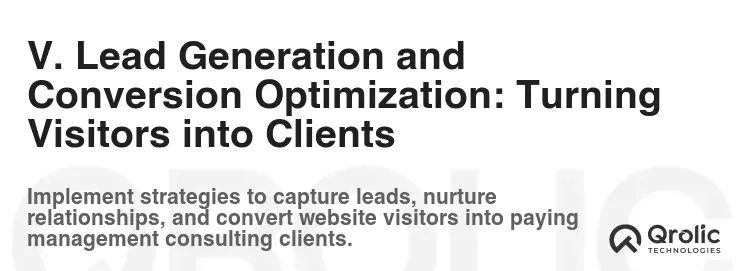
Attracting visitors to your website is only half the battle. You also need to convert them into leads and ultimately, clients.
1. Lead Capture Forms
Use lead capture forms to collect contact information from potential clients.
- Placement: Place lead capture forms strategically throughout your website, such as on your homepage, service pages, and blog posts.
- Incentives: Offer incentives to encourage visitors to fill out your forms, such as free ebooks, white papers, or consultations.
- Keep it Simple: Only ask for essential information to avoid scaring visitors away.
- Privacy Policy: Clearly state how you will use and protect their information.
2. Call-to-Action Optimization
Use clear and compelling CTAs to encourage visitors to take desired actions.
- Placement: Place CTAs strategically throughout your website.
- Wording: Use action-oriented language (e.g., “Request a Consultation,” “Download Our Guide,” “Contact Us”).
- Design: Make your CTAs visually appealing and easy to click.
- A/B Testing: Test different CTAs to see which ones perform best.
3. Email Marketing
Email marketing is a powerful tool for nurturing leads and converting them into clients.
- Build an Email List: Collect email addresses through lead capture forms on your website.
- Segment Your List: Segment your email list based on interests and demographics to send targeted emails.
- Provide Valuable Content: Send emails that provide valuable content and insights to your subscribers.
- Promote Your Services: Promote your consulting services in your emails.
- Track Your Results: Track your email marketing results to see what’s working and what’s not.
4. Landing Page Optimization
Create dedicated landing pages for specific marketing campaigns.
- Clear and Concise Messaging: Focus on a single message and a clear call to action.
- Relevant Content: Provide content that is relevant to the campaign.
- Lead Capture Form: Include a lead capture form to collect contact information.
- A/B Testing: Test different elements of your landing page to see which ones perform best.
5. Live Chat
Implement live chat on your website to provide instant support and answer questions from potential clients.
- Availability: Make sure your live chat is available during business hours.
- Responsiveness: Respond to inquiries quickly and efficiently.
- Professionalism: Train your live chat agents to be professional and helpful.
VI. Promoting Your Management Consultant Website: Driving Traffic and Visibility
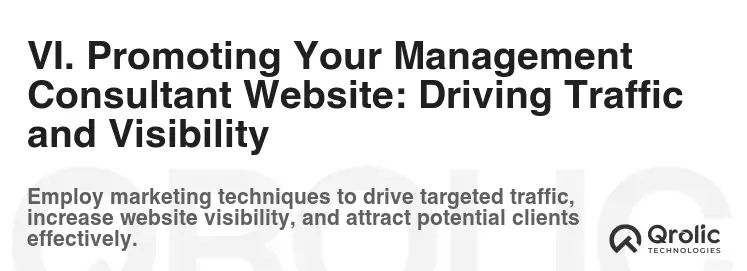
Creating a great website is only the first step. You also need to promote it to drive traffic and visibility.
1. Search Engine Optimization (SEO)
SEO is crucial for driving organic traffic to your website.
- Keyword Research: Identify relevant keywords.
- On-Page Optimization: Optimize your website content for those keywords.
- Off-Page Optimization: Build high-quality backlinks.
- Technical SEO: Ensure your website is technically sound and easy for search engines to crawl and index.
- Local SEO: If you target local clients, optimize your website for local search.
2. Social Media Marketing
Social media is a powerful tool for promoting your website and engaging with potential clients.
- Choose the Right Platforms: Focus on the platforms your target audience uses.
- Share Valuable Content: Share your blog posts, case studies, and other valuable content.
- Engage with Your Audience: Respond to comments and questions, and participate in relevant conversations.
- Run Targeted Ads: Use social media advertising to reach your target audience.
3. Content Marketing
Content marketing involves creating and sharing valuable content to attract and engage your target audience.
- Blog Posts: Write informative and engaging blog posts on relevant topics.
- Ebooks and White Papers: Create in-depth guides and resources.
- Infographics: Create visually appealing infographics.
- Videos: Create informative and engaging videos.
- Podcasts: Start a podcast to share your expertise.
4. Paid Advertising
Paid advertising can be a quick and effective way to drive traffic to your website.
- Google Ads: Run targeted ads on Google search results.
- Social Media Ads: Run targeted ads on social media platforms.
- Retargeting Ads: Show ads to people who have previously visited your website.
5. Public Relations
Public relations can help you build brand awareness and credibility.
- Press Releases: Issue press releases to announce new services, partnerships, or accomplishments.
- Media Outreach: Reach out to journalists and bloggers to pitch your stories.
- Speaking Engagements: Speak at industry conferences and events.
VII. Analyzing and Improving: Continuous Optimization
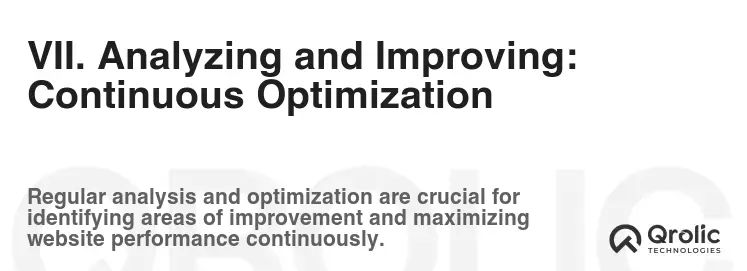
Website creation isn’t a one-time task; it’s an ongoing process of analysis and improvement.
1. Google Analytics
Use Google Analytics to track your website’s performance.
- Traffic: Track the number of visitors to your website.
- Bounce Rate: Track the percentage of visitors who leave your website after viewing only one page.
- Time on Site: Track the average amount of time visitors spend on your website.
- Conversions: Track the number of visitors who complete desired actions (e.g., filling out a form, requesting a consultation).
- Traffic Sources: Identify the sources of traffic to your website.
2. Heatmaps
Use heatmaps to see how visitors interact with your website.
- Click Maps: See where visitors are clicking on your website.
- Scroll Maps: See how far visitors scroll down your website.
- Move Maps: See where visitors are moving their mouse on your website.
3. A/B Testing
Use A/B testing to test different versions of your website.
- Headlines: Test different headlines to see which ones perform best.
- CTAs: Test different CTAs to see which ones perform best.
- Images: Test different images to see which ones perform best.
- Layouts: Test different layouts to see which ones perform best.
4. User Feedback
Collect user feedback to identify areas for improvement.
- Surveys: Conduct surveys to gather feedback from visitors.
- Feedback Forms: Include a feedback form on your website.
- User Testing: Conduct user testing to observe how users interact with your website.
5. Regular Updates
Keep your website up-to-date with fresh content and the latest design trends.
- Update Your Content: Regularly update your website content to keep it fresh and relevant.
- Update Your Design: Update your website design to reflect the latest trends.
- Update Your Plugins and Themes: Regularly update your plugins and themes to ensure security and compatibility.
VIII. Qrolic Technologies: Your Partner in Digital Transformation

Creating a successful management consultant website requires expertise in website design, development, and digital marketing. Qrolic Technologies (https://qrolic.com/) is a leading provider of digital solutions that can help you achieve your online goals.
Qrolic Technologies offers a wide range of services, including:
- Website Design and Development: Creating professional and engaging websites tailored to your specific needs.
- Search Engine Optimization (SEO): Improving your website’s ranking in search engine results.
- Social Media Marketing: Managing your social media presence and engaging with your target audience.
- Content Marketing: Creating and distributing valuable content to attract and engage your target audience.
- Paid Advertising: Running targeted advertising campaigns on Google and social media platforms.
- Consulting: Helping you develop a digital strategy that aligns with your business goals.
Why Choose Qrolic Technologies?
- Experienced Team: Qrolic Technologies has a team of experienced professionals with expertise in all aspects of digital marketing.
- Proven Results: Qrolic Technologies has a track record of delivering results for its clients.
- Customized Solutions: Qrolic Technologies provides customized solutions tailored to your specific needs.
- Affordable Pricing: Qrolic Technologies offers competitive pricing.
- Excellent Customer Service: Qrolic Technologies is committed to providing excellent customer service.
Partnering with Qrolic Technologies can help you create a website that attracts clients, showcases your expertise, and drives business growth. They understand the unique needs of management consultant firms and can provide the consulting design expertise you need to succeed online. Let Qrolic Technologies be your essential guide to digital success.
IX. Common Mistakes to Avoid
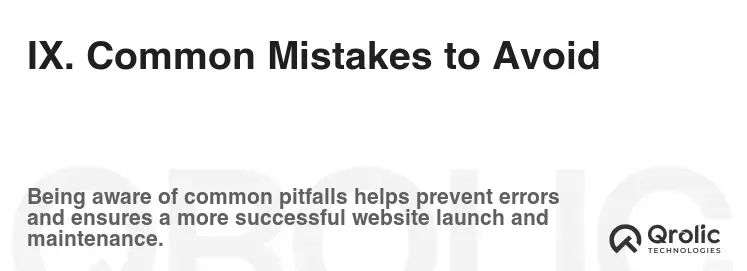
- Neglecting Mobile Optimization: In today’s mobile-first world, a website that isn’t optimized for mobile devices will be penalized by search engines and provide a poor user experience.
- Poor Quality Content: Thin, poorly written, or irrelevant content will deter visitors and damage your credibility.
- Ignoring SEO: Failing to optimize your website for search engines will make it difficult for potential clients to find you online.
- Slow Loading Speed: A slow-loading website will frustrate visitors and increase your bounce rate.
- Lack of Clear Call-to-Actions: Failing to provide clear and compelling CTAs will make it difficult for visitors to convert into leads.
- Ignoring Analytics: Not tracking your website’s performance will make it impossible to identify areas for improvement.
X. Final Thoughts: Your Website is an Investment

Creating a successful management consultant website requires careful planning, execution, and ongoing optimization. It’s an investment in your brand, your credibility, and your business growth. By following the steps outlined in this essential guide, you can create a website that attracts clients, showcases your expertise, and helps you achieve your business goals. Remember to focus on providing value to your audience, building trust, and continuously improving your website based on data and feedback. Good luck!






